Back
to Shop Made Tools
Planing
the female sliding dovetail
I
was chatting to Terry Gordon at the recent Perth Woodshow. He was
demonstrating how he used a dado plane along with a Snipe Bill to
create a female sliding dovetail. This looked very slow going to
me.
Some
years ago I built a dovetail plane to cut the male side of the
joint.

The
female side was sawn, a chisel used to roughly remove the waste, and
a router plane cleaned up the remainder. There is a pictorial
here:
http://www.inthewoodshop.com/Furniture/SlidingDovetailsbyhand1.html
The
conversation with Terry re-kindled my interest in a plane to shape
the female joint. I came away from the show with a purchase of his
superb 1/2" dado plane (a review will come in a few
months).

A
week or so after the show, Giuliano
posted his dovetail plane. This was a simple and excellent design,
basically a dado plane. So rather than attempting to re-invent the
wheel, I decided to make a version of this, which I gather is a
design that goes back many years. Of course, I did want to stamp my
own mark on the result, and decided that it also must fit in with the
HNT Gordon dado plane.
This
was completed today ...
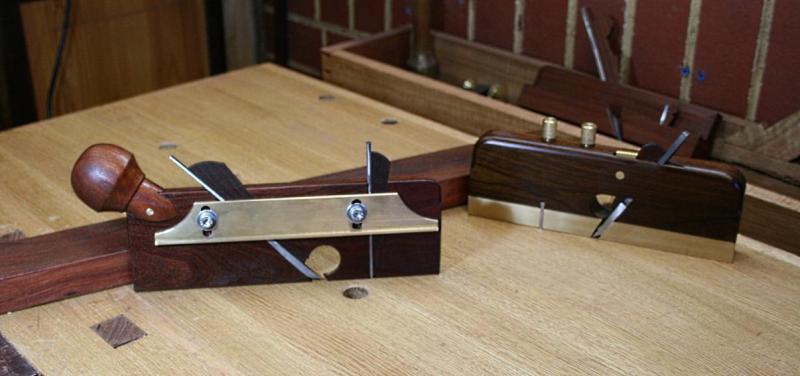
The
plane is 9 1/4" long and 3" high. It s 1/2" thick at
the wide (upper) section, and a touch under 1/4" wide at the
lower section. The reason for the ball handle is that the thin body
is too uncomfortable to grip as is. The added handle makes it very
comfortable to push.

The
rear side ..

An
integral part of the plane is the Jarrah guide. This is 24"
long.
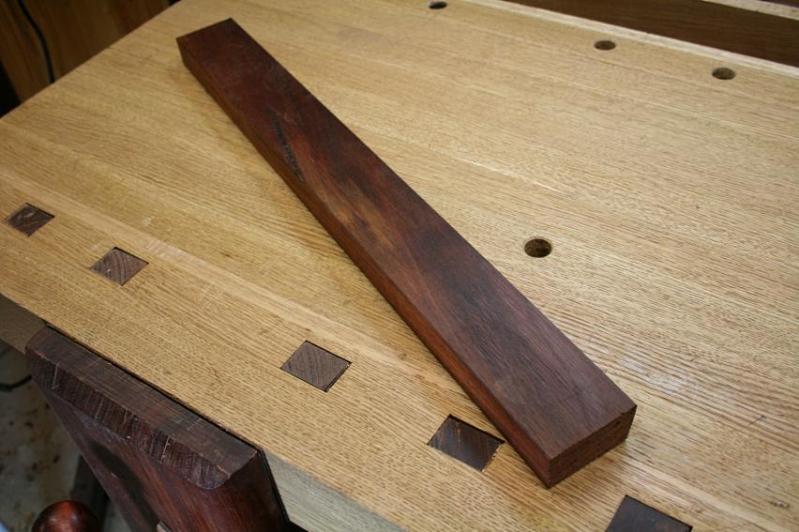
The
underside has 240 grit sandpaper attached as non-slip.
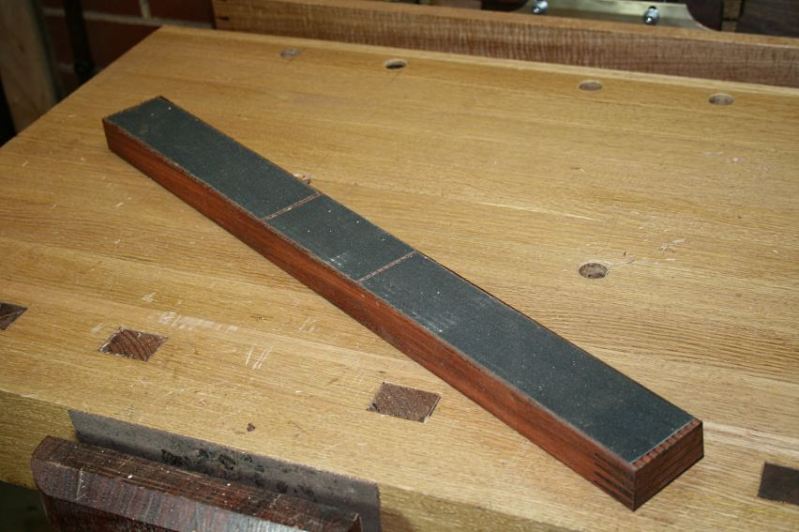
One
side is 90 degrees (for the dado plane) and the other has a 1:6 slope
(for the dovetail plane).
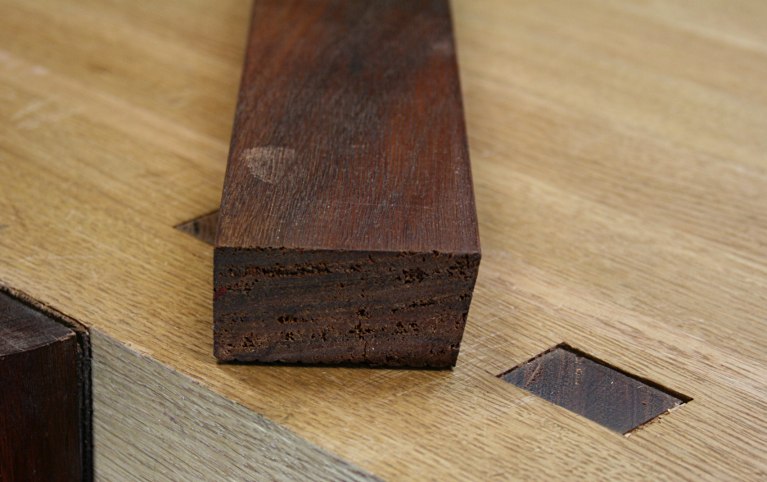
The
dovetail plane runs along the guide and planes at an angle. However,
unlike a dado plane, the blade on the dovetail plane is angled so
that the lower edge cuts parallel to the surface.
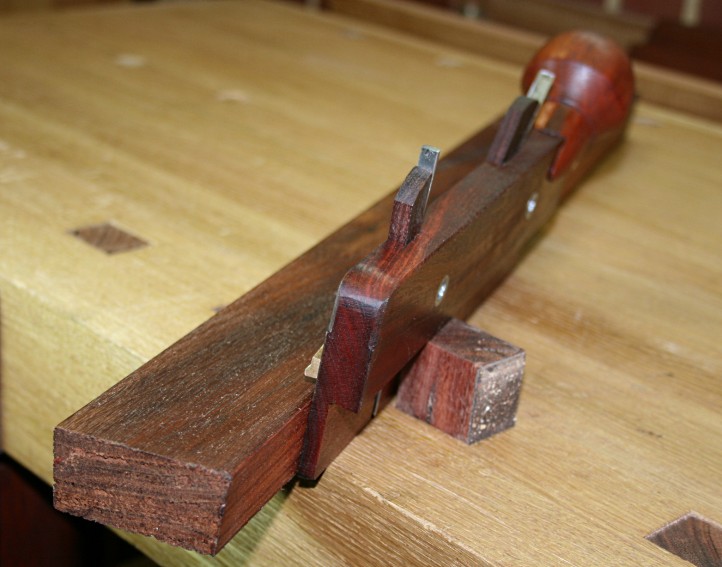
Here
are a few construction details:
The
body ...

This
is the main blade (on the left) with a double-sided nicker (on the
right). Both are angled to fit the angled (1:6) sole.

The
lower edge of the depth stop is angled to run along the top of the
guide.

The
basic method is shown here ..

I
attempted two types of sliding dovetails for practice. The first was
a half-dovetail. This has a taper on one side and is square on the
other. It was made using the dovetail plane first, and then the dado
plane.
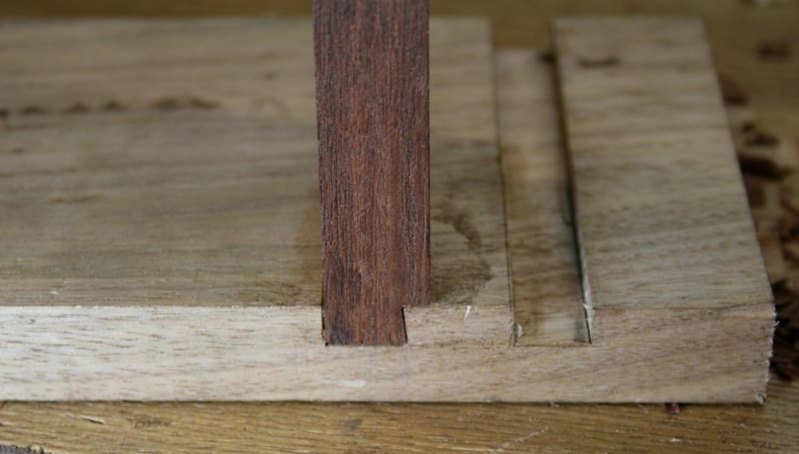
The
other was a basic parallel double sided dovetail - a tapered version
is made the same way. Here I was checking for accuracy. This was the
result of the first effort ..

What
do I think of the plane? Frankly, I am not sure whether I still
prefer sawing/chiseling/routing. It's a new process and the set up is
new. Time will tell.
Regards
from Perth
Derek
September
2012














